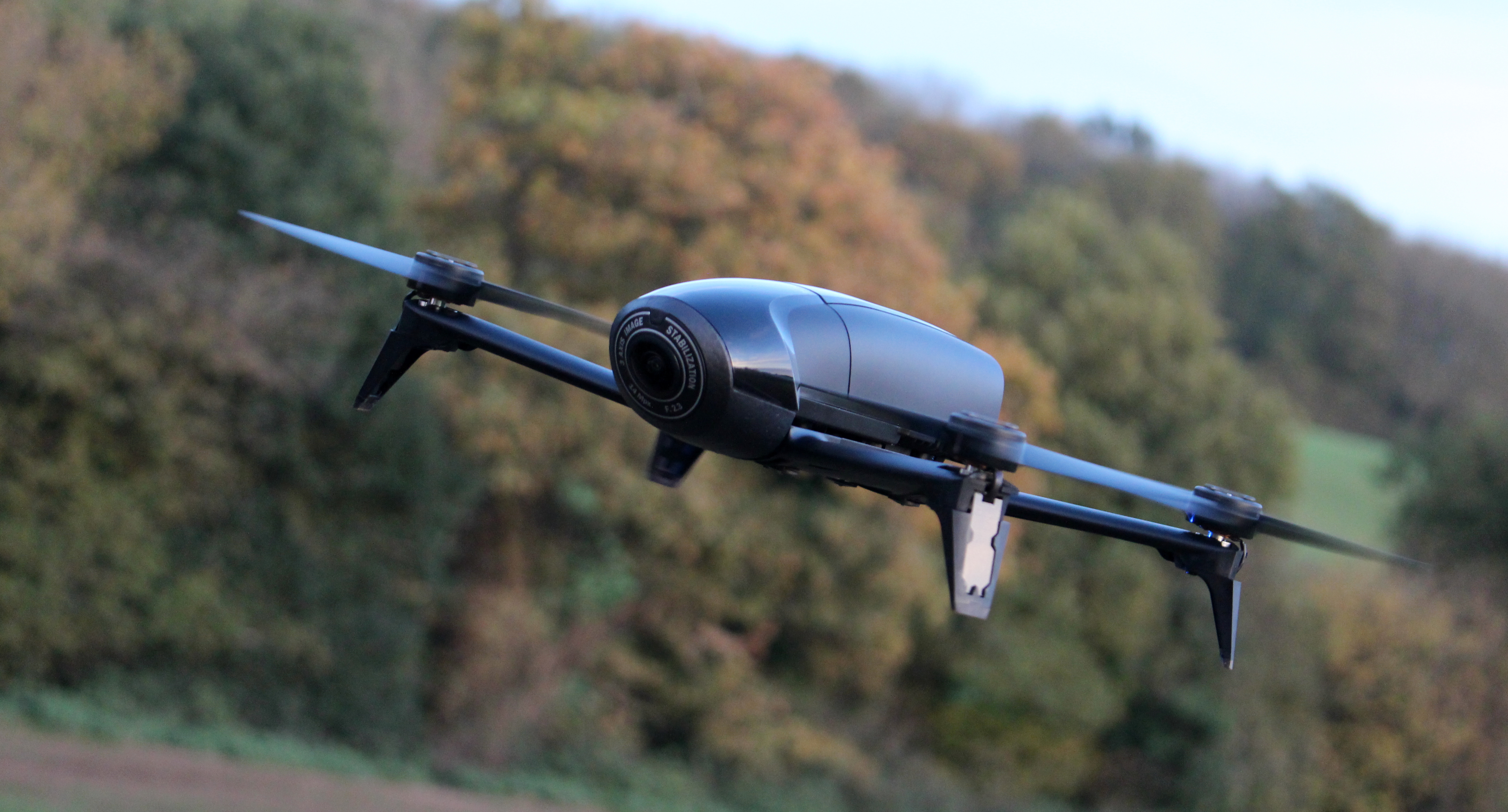TechRadar Verdict
While the Bebop 2 Power represents a modest improvement on the previous model, it remains one of the best-value drones on the market right now thanks to its portable design, excellent performance, intuitive companion app and decent stamina.
Pros
- +
Light and portable
- +
Good stamina
- +
Excellent companion app
Cons
- -
Battery change needed to reach an hour of flight
- -
Video could be better
Why you can trust TechRadar
French firm Parrot has enjoyed notable success with its Bebop range of drones, with the Bebop 2 combining excellent performance with good image capture at a low price. The Bebop 2 Power is, as the name suggests, an upgraded variant of that product, with its most notable improvement being longer flight time thanks to the fact that it ships with not one but two batteries, each rated for around 30 minutes of stamina. Bundled with the Parrot Skycontroller 2 remote and the Parrot Cockpitglasses FPV headset, the Bebop 2 Power works in conjunction with the official FreeFlight application on your iOS or Android smartphone.
Price and availability
You can pick up the Bebop 2 Power bundle – which includes the drone, two batteries, Skycontroller 2 remote and the Parrot Cockpitglasses FPV – for around £629 in the UK and $599.99 in the United States.
Design
Just as the original Bebop 2 iterated on its forerunner the Bebop, this new model is an evolution rather than a revolution. The overall design remains largely unchanged; there are the four props mounted on arms which are attached to the main body of the drone using rubberised dampeners – these prevent the vibration from impacting recorded footage. The 14MP camera is found at the front of the unit and employs a fisheye lens, which is protected by a plastic hood when the unit is not in use. The battery pack fixes to the rear of the drone, where you'll also find a blue LED light.
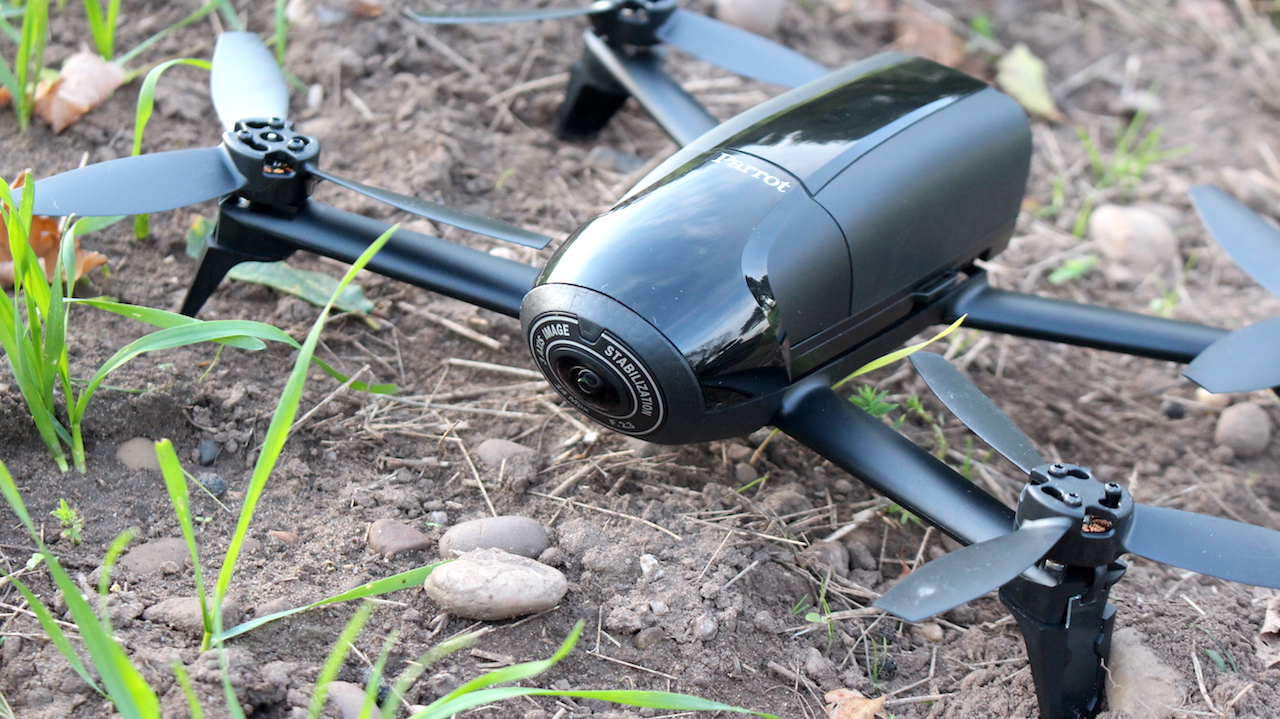
The big difference this year is that Parrot has abandoned the white and black color scheme of the Bebop 2 and used all-black bodywork. This has the effect of making the drone look sleeker and meaner; we quite like it, but less kind observers might comment that it looks a bit boring.
Also included in the box is the Parrot Skycontroller 2 remote, which not only provides a full set of physical controls but also greatly increases the operational range of the drone – the quoted range is 1.2-miles, or 2 km.
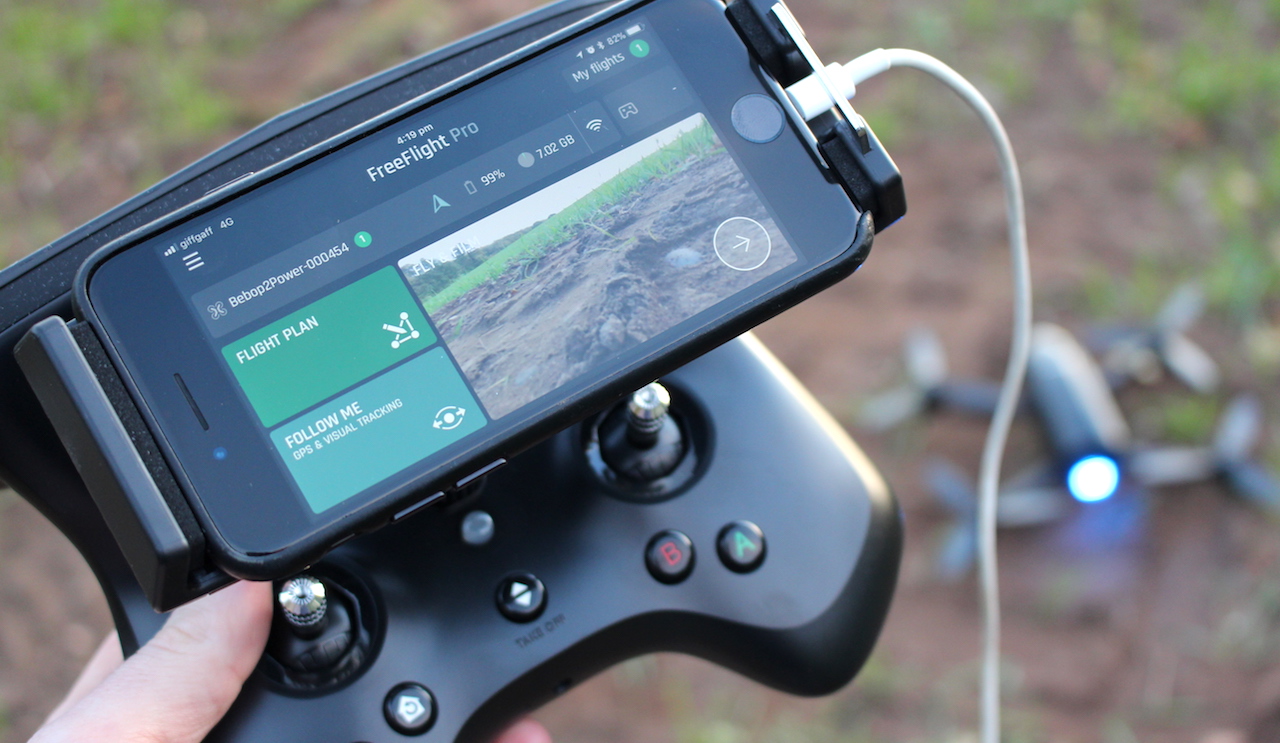
The remote connects to your smartphone via the FreeFlight Pro application, and you mount the device onto the Skycontroller so you have a drone's eye view of the action.
Taking this concept to the next level is another bundled item, the Cockpitglasses FPV headset. The design has been refined a little since the previous model and the unit is much more compact. Slide your phone in, connect to the Skycontroller 2 remote and you've got a first-person perspective on what the Bebop 2 Power is seeing.
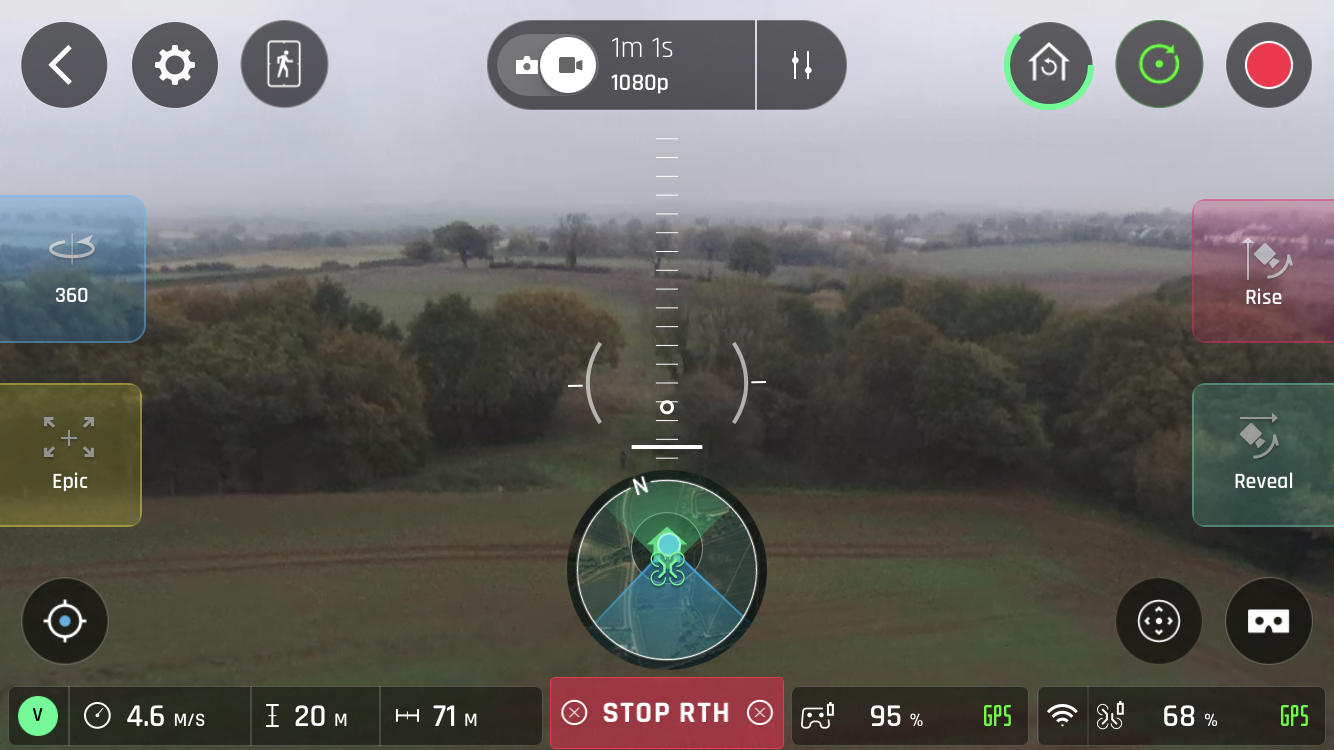
It's a genuinely cool feature which we're surprised more drone manufacturers haven't adopted; it's far easier to control your unit when you're seeing what it's seeing, but naturally you have to be aware of the fact that when you're using the headset you can only see obstacles that are in the Bebop 2 Power's field of vision (and, perhaps more importantly, you'll be standing outside in public with no awareness of your own surroundings).
Build and handling
Like the Bebop 2, this model isn't all that heavy when compared to other drones and the majority of its weight comes from the 3,350mAh battery. The nose is padded with a polystyrene-like material while the body is clad in a thin plastic which flexes under pressure. Despite its rather flimsy appearance the Bebop 2 Power didn't fall apart on us during trials, although we wouldn't want to test it in a high-speed collision with anything particularly solid.
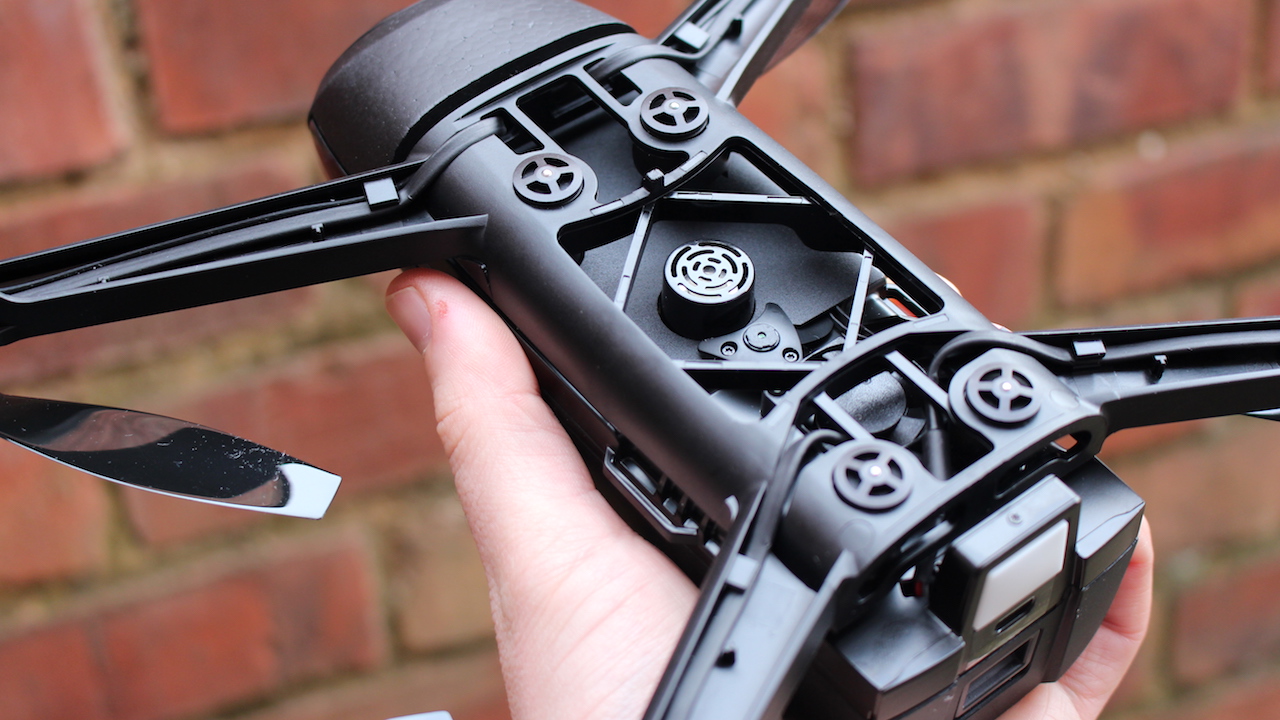
Just like its forerunner, this drone is easy to control and handles well when in the air. Responsiveness is good and the unit is stable enough to operate in relatively blustery conditions – something we were surprised at, considering how light it feels in the hand. In the standard mode it's quite slow – especially when making turns – but Parrot has included a Sports Mode in this year's model which gives it a top speed of around 40 miles per hour. Novices may wish to avoid enabling this feature until they're comfortable with the controls, as the unit is harder to control at high speeds.
Performance and battery life
The Parrot FreeFlight Pro application comes with a few modes which allow you to strike a neat balance between slick automation and manual control. Experienced fliers can ignore these modes and start twiddling the sticks the moment they crack open the packaging, but novices will appreciate features like the "Follow Me" system which tracks objects, "Touch & Fly" to pick out points on the map for automated flight and several predetermined flight patterns – Orbit, Tornado, Parabola or Boomerang – which cause the unit to to perform a quick stunt. Other options include the "Reveal" – which slowly pans the camera up to show the landscape – and "Rise", a classic drone video move which looks great when filming in vast, open locations.
As before, a handful of these elements are locked behind a pay-wall but Parrot includes a voucher in the box which gives you access to them. It's a shame that the company still keeps things hidden behind in-app purchases but we're assuming this remains a viable business model for the firm – at least they're now seeing fit to give these superb extra features to the people who buy their drones.
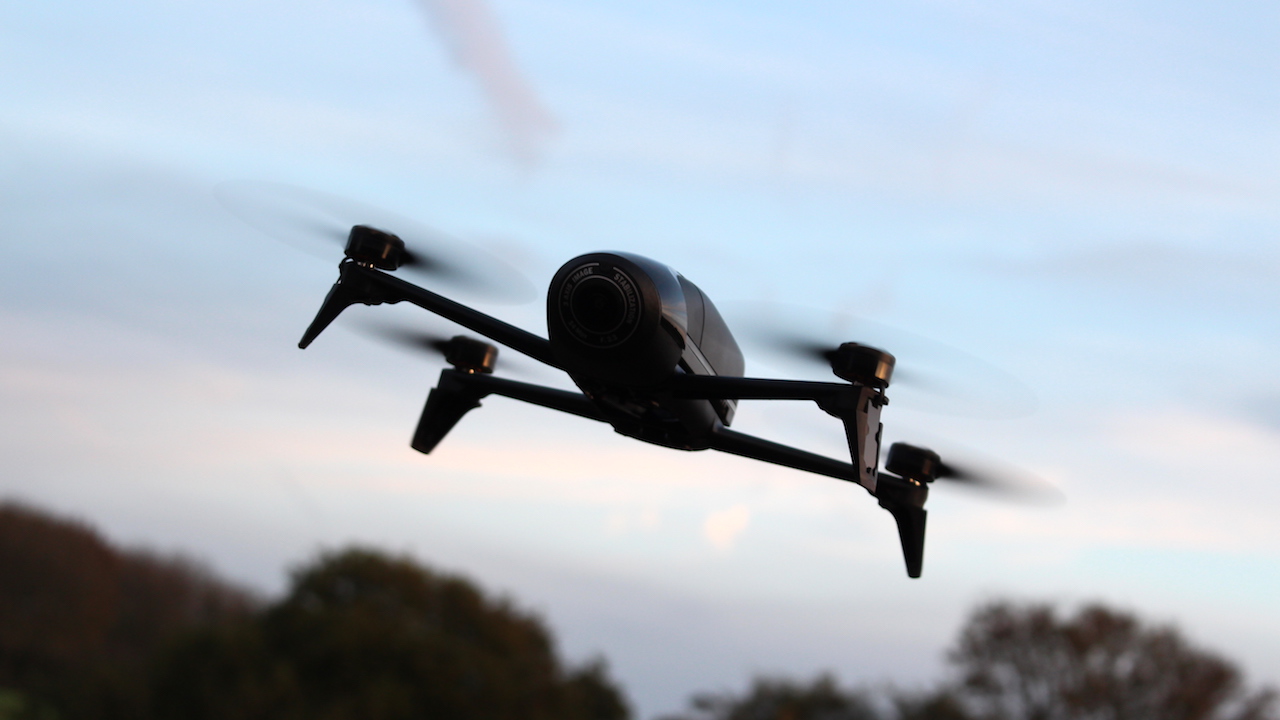
The "Power" element of this drone's name relates to the advertised one hour of flight time – and on paper at least, this makes Parrot's effort a market leader in stamina. However, such boasting is misleading. The Bebop 2 Power does give around 60 minutes of flight time per trip, but that's across not one but two batteries, each rated for around half an hour of flight – dependant on drone activity, wind strength and other factors.
This is definitely a bit of creative marketing on Parrot's part, but even on a single battery, 30 minutes of flight time isn't to be sniffed at – many other drones can barely manage 20 minutes on a single charge. And because you get two batteries in the box, it means your flight days can last that little bit longer without the need to purchase an additional power cell.
Video and photo capture
The Bebop 2 Power's wide-angle fisheye lens is unique in that it allows the drone's 14MP CMOS sensor to capture a lot of information at any one time. The drone's software doesn't use the entire image, but instead crops the shot to a standard size and uses 3-axis stabilization to keep things nice and steady.
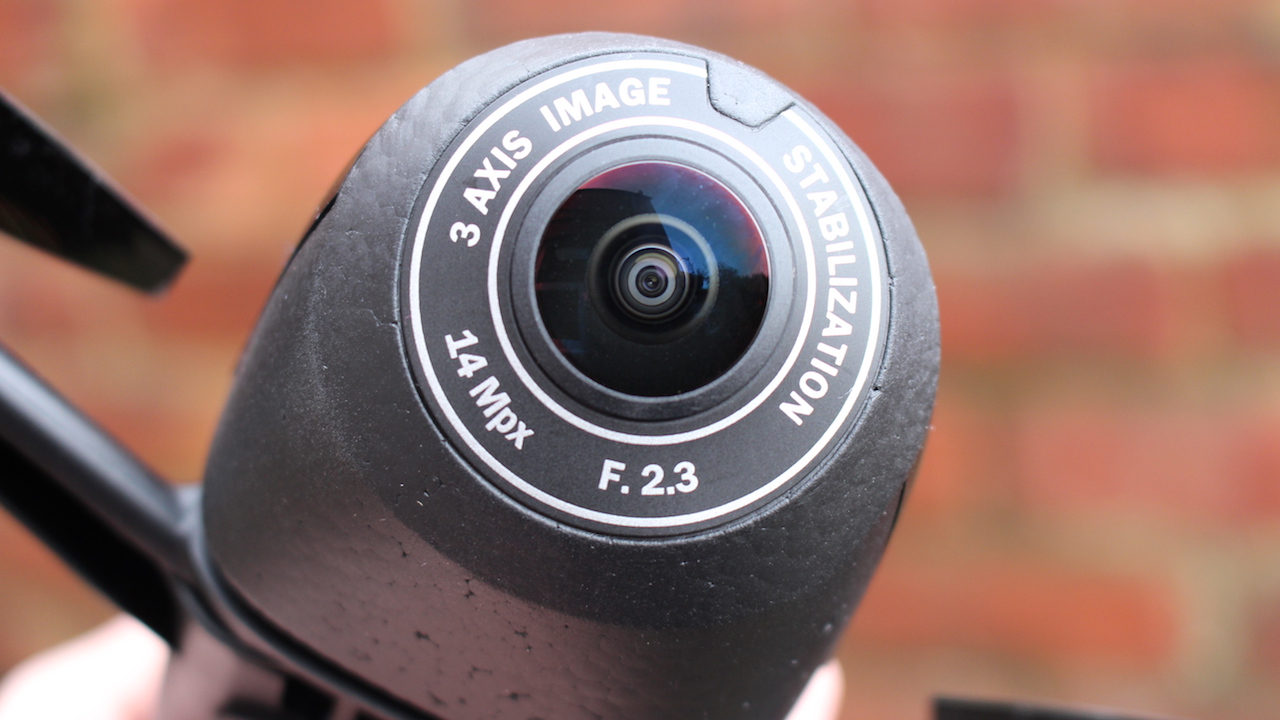
The idea is that this approach reduces the impact of camera shake from normal movement and the wind; the results speak for themselves as both photos and video are silky-smooth and blur-free – although the shape of the lens sometimes results in odd distortion when light hits it, but this doesn't happen often.
Photos are available in a wide-angle mode and come out really nicely, but video is limited to 1080p at 30FPS and pales a bit when compared to other leading drones. With so many top-range units now offering 4K video recording, this is a little disappointing, but it has to be remembered that the Bebop 2 Power costs a lot less than other examples on the market.
We liked
The Bebop 2 Power is easy to pick up and use, and the new flight patterns make you feel like a pro in no time at all. 30 minutes of flight time per battery is good, too, and the camera – despite not reaching 4K limits – produces good photos and acceptable video recording. To top it all off, the unit is light and very portable, which cannot be said of some pro-level drones.
We disliked
It's a bit cheeky advertising an hour of flight time when you have to land the drone and replace the battery after 30 minutes, but we can just about forgive Parrot for that. The flimsy nature of the drone causes us some worries as well – don't expect this to survive too many bumps – and we'd love to have seen better quality video capture at 4K resolution.
Verdict
An evolution rather than a revolution, the Bebop 2 Power remains a solid choice for drone newcomers and veterans alike, just like its forerunner.
